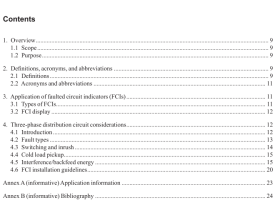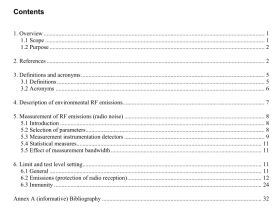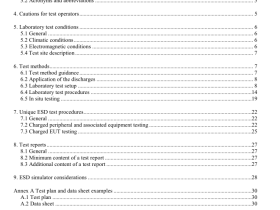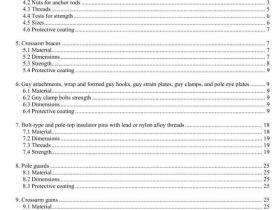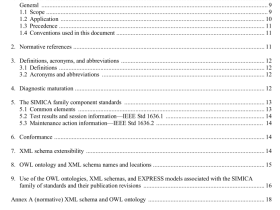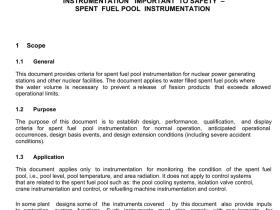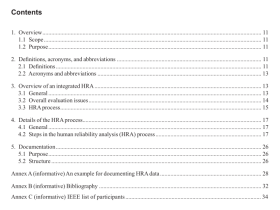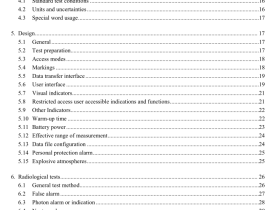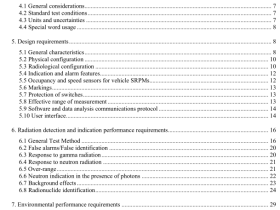IEEE PC37.30.4 pdf download
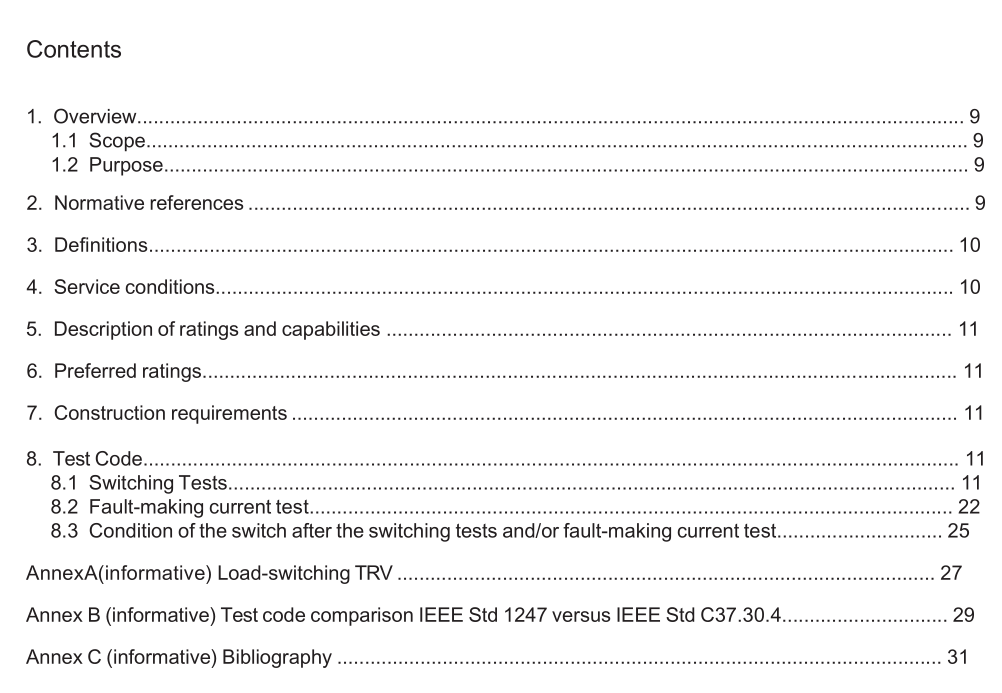
IEEE PC37.30.4 pdf download IEEE Standard for Test Code for Switching and Fault Making Tests for High-Voltage Interrupter Switches, Interrupters or Interrupting Aids Used on or Attached to Switches Rated for Alternating Currents Above 1000 V
5. Description of ratings and capabilitiesRefer to appropriate product standard.
6. Preferred ratings
Refer to appropriate product standard.
7. Construction requirementsRefer to appropriate product standard.
8. Test Code
8.1 Switching Tests
Switching tests are performed to determine the adequacy of the design of a particular type, style, or model ofswitch or its component parts to meet its assigned switching abilities.
8.1.1 General
The switching test conditions shall be stated in terms of the following-
a)The test voltage
b)The test currentcThe test circuit
dThe number of operations
8.1.1.1 Condition of the switch to be testedThe switch shall be new or in good condition.8.1.1.2 Mounting of switch
The switch shall be mounted in the usual service position for which it is designed.The base or other normallygrounded metal parts shall be grounded except as explained in the last paragraph of this subclause.
The interrupting ability of a switch that relies on a rapidly increasing external air gap for circuit interruption(i.e., quick break arcing horns) may be dependent on mounting position. ln this case, the mounting arrangementshould be recorded to assist in the application of the device.
Due consideration shall be given to the choice of source side connections.When the switch is intended forpower supply from both sides and the physical arrangement of one side differs from that of the other side, thelive side of the test circuit shall be connected to the side that represents the most onerous condition. Iln caseof doubt, some of the operations shall be carried out with the supply connected to one side and the remainingoperations with the supply connected to the other side.
lf the switch is to be rated for use in enclosures, the tests shall be made in the smallest enclosure for whichthe switch is intended to be used, or the tests shall be made with metallic screens placed in the vicinity of thelive parts and separated from them by a minimum clearance specified by the manufacturer.The enclosure, orscreens, as well as the frame and other normally grounded parts shall be insulated from ground, but connectedthereto through a suitable device to indicate current to ground greater than 3 A. A fuse consisting of a 5 cm (2 in) long #38 AwGcopper wire is one method sufficient to detect current to ground inexcess of approximately 3A.
8.1.1.3 Single-phase versus three-phase testing
Interrupting tests on three-pole, gang-operated switches are preferably made three-phase at rated maximumvoltage but may be made single-phase.However, the following standards may require three-phase testing:
a)IEEE Std C37.20.2—IEEE Standard for Metal-Clad Switchgear’
b)IEEE Std C37.20.3—IEEE Standard for Metal-Enclosed Interrupter Switchgear (1 kV-38 kV)
c)IEEE Std C37.20.4—IEEE Standard for Indoor AC Switches (1 kV to 38 kV) for use in Metal-
Enclosed Switchgear
d)IEEE Std C37.74—IEEE Standard Requirements for Subsurface,Vaul,and Padmounted Load-
Interrupter Switchgear and Fused Load-Interrupter Switchgear for Alternating Current Systems up to38 kV
Test voltages for single-phase tests to establish a rating “for systems with grounded sources and loads only”shall be computed by the formula:
Test voltage = rated maximum voltage
3
Test voltages for single-phase tests used to establish a three-phase rating for all other grounding conditions aregiven in Table 1.
Single-phase testing to establish a three-phase rating performed on an integrally mounted three-pole switchshall be performed with the non-energized poles grounded.
Interrupting tests on single-pole switches (or single-pole switches combined in a three-pole assembly, butoperated pole after pole) shall be performed single-phase at rated maximum voltage.
